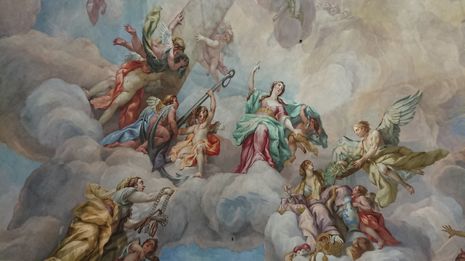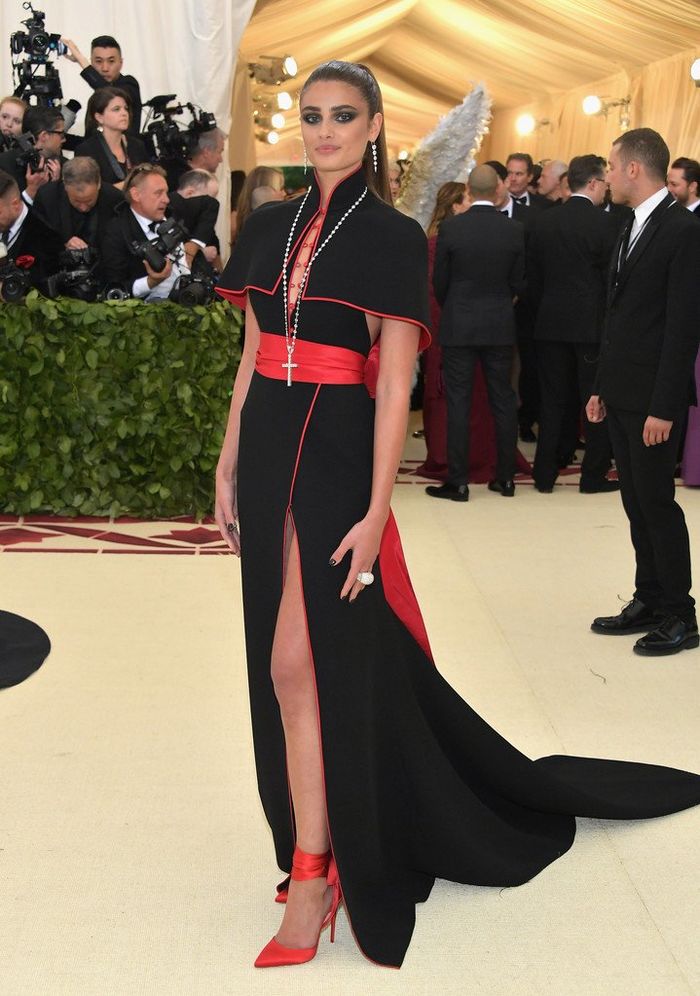Fashion’s use of the religious place
In the penultimate instalment of her series on representations of Christianity in fashion, Eliane Bedu demonstrates the use of the religious place in fashion

What this series’ previous articles have shown us is that Christianity is a recurrent theme in fashion. Symbols such as crosses and pierced hearts are sewn onto the bibs of dresses while traditional papal clothes are being reinvented on red carpets. But what about religious places? How are churches being represented in high fashion? It is quite difficult to imagine how a place as silent and solemn as a cathedral can merge with the runways’ frenzy. As the theme of respect for believers was addressed in the previous article, it is this time undeniable that setting a couture show in a religious place would be scandalous. But what about recreating it?
“By deconstructing the spatial and temporal configuration of religious places, designers are expanding their means of artistic expression”
At Dior’s ready-to-wear Spring 2021 show, the tent which was set up in the Tuileries Garden was transformed into a chapel as coloured stained-glass windows were projected onto the black hangings. Made up of collages, those modern windows mixed photography with music partitions, religious paintings, and a variety of texts. As the only source of light, they nearly stole the show from the designs. To the sound of traditional Corsican songs, it was time for adoration, as models divinely appeared from the darkness. Dior’s show wasn’t the only one which utilised the potential of a religious space.
Chanel’s Couture Spring 2020 show took inspiration from the garden of Aubazine’s Abbey, the orphanage in which Mademoiselle Chanel grew up. Centrepiece of the runway, models “catwalked” across the “jardin à la française”, orchestrated around a stone fountain. The whole stage was surrounded by white sheets stretched on hangers, reminiscent of the student’s laundry which used to dry in the garden. The abbey was one of Chanel’s main inspirations. She used the neutral colours of its architecture (shades of beige) in many of her designs and created the iconic logo for her brand based on the design of the chapel’s stained-glass windows.
But religious places are not only for runway shows. Dolce & Gabbana’s central shop in Rome recreates the superb architecture of Christian churches in its decoration. Roman columns, mosaics in the entrance which bear the inscription: “A deo rex, a leo rex” (meaning “when the king’s authority comes from God, the king makes the law”), with black, gold and red drapes lining the room. But, more impressively, an entire room is dedicated to the Sistine Chapel, with Michelangelo’s frescoes being recreated on the walls and the vaulted ceiling, while religious music plays.
A religious place can go beyond its spatial and temporal framework to be used as textile pattern. I already briefly acknowledged Dolce & Gabbana’s mosaic dresses in the introduction piece of this series. Inspired by the Cathedral of Monreale, which is the perfect example of Norman architecture, the two designers organised their Fall 2013 ready-to-wear collection around icons and medieval art. As with the interior of the cathedral, designs are magnificent, golden, embroidered with coloured stones which reflect light in the dark atmosphere. But the two Sicilian designers are not the only ones who had the idea of converting religious places into clothes. Taking advantage of the opportunity of the 2018 Met Gala, Vera Wang, the famous bridal designer, recreated frescoes from the Sistine chapel on Ariana Grande’s dress. Covered in tulle, the design made her appear angel-like, as if floating in the air. Finally, Jean-Paul Gaultier drew inspiration from churches’ stained-glass windows for his 2007 Spring Couture collection. With halos and dress patterns, the models’ plastered faces contrasted with the designs’ vibrant colours, emphasising the sacredness of the collection.
Religious inspiration can take many shapes. In this case, designers are mixing different forms of art; fashion, which is characterised by movement, and architecture, the fixed and static. By deconstructing the spatial and temporal configuration of religious places, they are expanding their means of artistic expression. An architectural design, combining volume with holding, is a feat worthy of building a cathedral. But as we’ve seen, the décor surrounding the designs both on the runways and in the store is as important. It enhances the clothes and accessories by its light, sobriety, or on the contrary its magnificence, making creations appear as divine works.
 Interviews / You don’t need to peak at Cambridge, says Robin Harding31 December 2025
Interviews / You don’t need to peak at Cambridge, says Robin Harding31 December 2025 News / Downing investigates ‘mysterious’ underground burial vault 29 December 2025
News / Downing investigates ‘mysterious’ underground burial vault 29 December 2025 News / Unions protest handling of redundancies at Epidemiology Unit30 December 2025
News / Unions protest handling of redundancies at Epidemiology Unit30 December 2025 Lifestyle / Ask Auntie Alice29 December 2025
Lifestyle / Ask Auntie Alice29 December 2025 Features / ‘Treated like we’re incompetent’: ents officers on college micromanagement30 December 2025
Features / ‘Treated like we’re incompetent’: ents officers on college micromanagement30 December 2025









